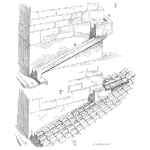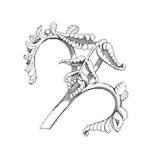
When Organizational Leaders Won’t Invest in Reliability but Require Deliverables
Abstract
Adam and Chris discussing organizational situations where upper management does not commit to reliability even though it advertises it does.
ᐅ Play Episode
Your Reliability Engineering Professional Development Site

Adam and Chris discussing organizational situations where upper management does not commit to reliability even though it advertises it does.
ᐅ Play Episode
by James Kovacevic Leave a Comment

Coaching is one of the key activities that help individual employees bring out the best of themselves to the table. It helps in maximizing their performance by making the best use of their abilities. A good coach helps the trainees to focus on the work they are doing. He facilitates them in every way he can so that they would improve their work by themselves. It can be a hard job sometimes because it’s a two-way street. The coaching will only be effective if the employee and coach are both receptive to the learning. They need to be willing to make improvements.
In this episode, we covered:
by Mike Konrad Leave a Comment

What happens when failure happens? This episode features Failure Analysis Investigators Eric Camden and Paco Solis. Together, they discuss stories from the field and some “interesting investigations”.
by Robert Kalwarowsky Leave a Comment

On this week’s episode, I welcome John Cummins and Ross Lane from Cal Opex on to the show. We talk about the importance of calibration and data quality.
If you have any questions, business inquiries or if you’d like to appear on the podcast, email me at robsreliabilityproject@gmail.com
Check out Cal Opex – calopex.com
Follow Rob’s Reliability Project on LinkedIn –www.linkedin.com/company/robsreliabilityproject/
Like Rob’s Reliability Project on Facebook –www.facebook.com/robsreliabilityproject/
Follow John Cummins on LinkedIn – https://www.linkedin.com/in/johnpcummins/
Follow Ross Lane on LinkedIn – https://www.linkedin.com/in/rossmlane/
Follow Rob Kalwarowsky on LinkedIn – https://www.linkedin.com/in/robert-kalwarowsky/
by Carl S. Carlson Leave a Comment

Carl and Fred discussing the role of certifications and degrees in forming the career path of a reliability engineer. This discussion builds off the previous podcast on the ultimate goal of a reliability career.
ᐅ Play Episode
by Carl S. Carlson Leave a Comment

Carl and Fred discuss a suggested topic from a listener: what is the ultimate career goal for a reliability engineer? Which are the advantages and disadvantages for each possible career path?
ᐅ Play Episode
by James Kovacevic Leave a Comment

Condition based monitoring is good for the equipment to do predictive analysis. Ultrasound helps greatly with this part. SDT is one of the leading ultrasound solutions companies in the world and they have introduced a new ultrasound tool to make the lubrication process better in the facilities. This new tool is called SDT-340 and it is combined with UAS4.0. SDT-340 collects machine data based on the ultrasound sensors and the new Ultra Analysis Suite detects even the slow moving machine parts where even a teeniest of rotation occurs in the systems. That is what makes it unique along with other upgrades that it had built-in.
ᐅ Play Episode
by Aaron Spearin Leave a Comment

The E6S-Methods podcast series is intended for the enthusiast or practitioner of quality, Lean, Six Sigma and other performance improvement tools. Its mission is to provide specific recommendations and different insights and approaches to some of the classic tools, as well as any new tools that may surface. Best practices, tips, and tricks will be shared as well as exploring multiple approaches to reach the same practical end. As this podcast grows in listener-ship, we will entertain listener submissions on specific project issues and use real active projects as a platform for various episodes. ᐅ Play Episode
by Mike Konrad Leave a Comment

This episode of Reliability Matters features an interview with SMT guru, Bob Willis.
by Mike Konrad Leave a Comment

Reliability Matters is a podcast on the subject of reliability of circuit assemblies. Reliability “best practices” and success stories are discussed. This podcast features interviews with experts in the electronic assembly industry.
All electronic production segments which effect product reliability are on the table. This includes contamination, coating, cleanliness assessment, inspection, building for harsh environments and more. ᐅ Play Episode
by James Kovacevic Leave a Comment

Scheduling is one of the key pieces in Maintenance and Management. When you are working on a piece of equipment vigorously to meet your production goals, some problems now and then are bound to occur. Now, these problems need to be fixed in time. This is how a maintenance job starts. When a job is created, it is planned and then needs time and resources to be completed successfully. That’s where scheduling comes in. The job of Maintenance Scheduler involves gathering all the information about a job, make sense of it, and then coordinate with all the related department to complete it just as planned.
ᐅ Play Episode
by Robert Kalwarowsky Leave a Comment

On this week’s episode, George Williams, Joe Anderson and Paul Crocker sit down with me to talk about public speaking, the International Maintenance Conference (IMC) and where we’re going to be in 2019. Happy Holidays and I sincerely appreciate you listening!
If you have any questions, business inquiries or if you’d like to appear on the podcast, email me atrobsreliabilityproject@gmail.com
Follow Rob’s Reliability Project on LinkedIn –www.linkedin.com/company/robsreliabilityproject/
Like Rob’s Reliability Project on Facebook –www.facebook.com/robsreliabilityproject/

Kirk and Fred discussing ways to find intermittent system failures.
ᐅ Play Episode
by James Kovacevic Leave a Comment

It is a common practice in the organizations to spend money on the maintenance of the equipment. They bring in a lot of people on board to fix the machines and every time a failure occurs, the maintenance guys do a temporary fix, and on and on it goes. In this process of fixing machines, if the organizations paid as much attention to the reliability of the assets rather than divert all their resources towards maintenance side of things, they might finally have a sustainable maintenance and reliability program. Maintenance and Reliability go hand in hand. You can’t just focus on maintenance alone.
ᐅ Play Episode

Kirk and Fred discussing a real case of product failure for a OEM sub-supplier and determining how to isolate the cause
ᐅ Play Episode